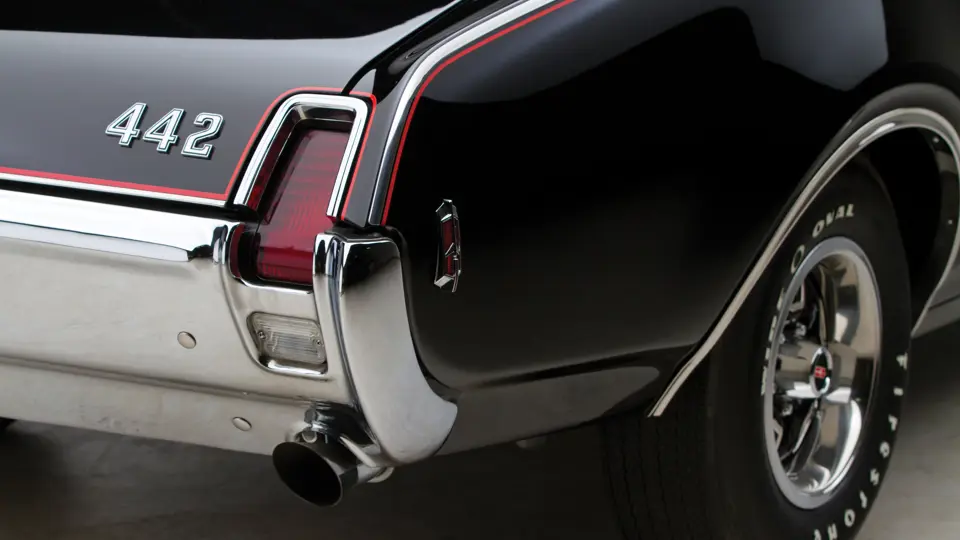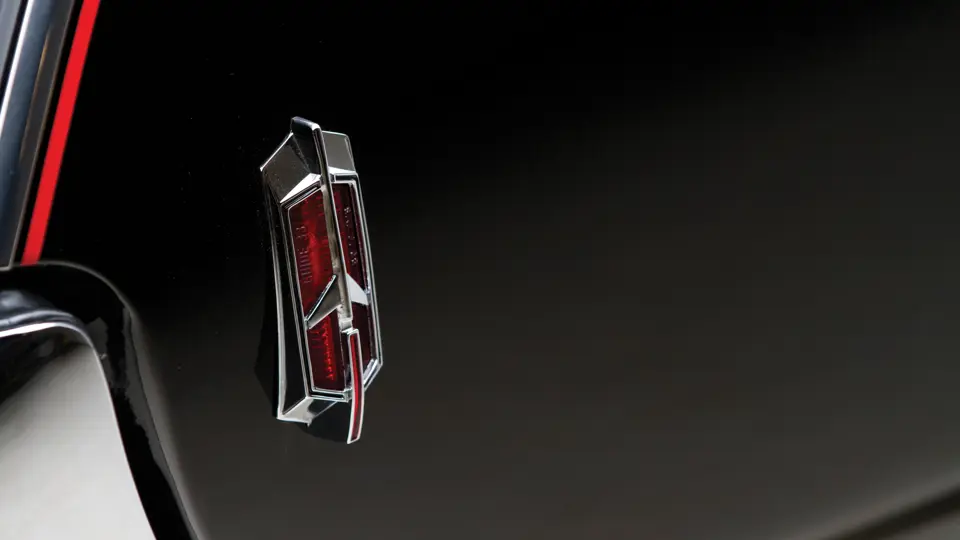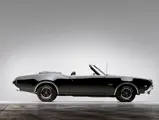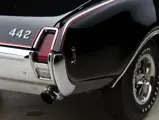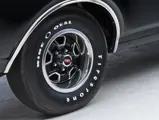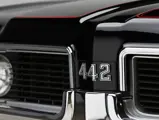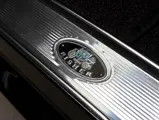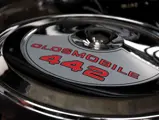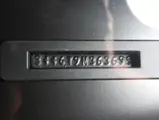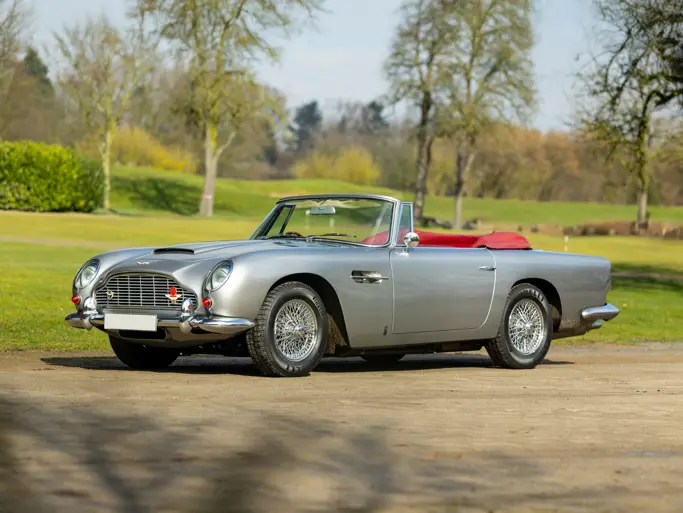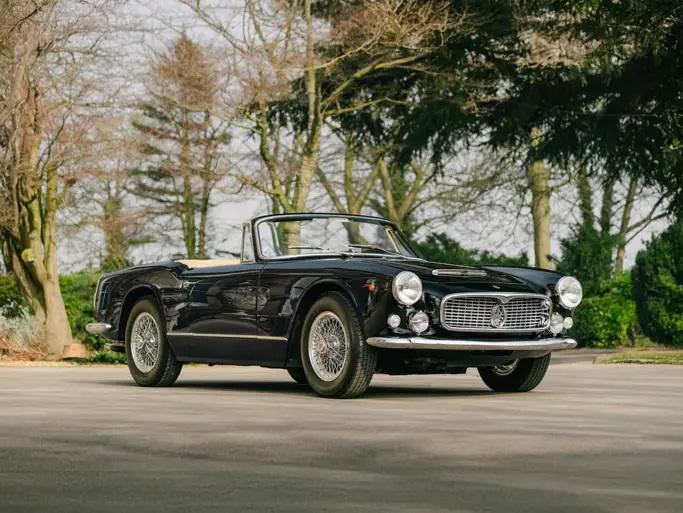An outstanding, fully restored, correct example
350 bhp, 400.0 cu. in. OHV V-8 engine, four-speed manual transmission, coil spring independent front suspension, live rear axle with semi-elliptic leaf springs, and power front-disc, rear-drum hydraulic brakes. Wheelbase: 112 in.
Pontiac’s ad man Jim Wangers and Division Manager John DeLorean are credited with creating the muscle car, subverting General Motors’ dictum against big engines in small cars by creating a large-engine option for the intermediate Tempest.
GM policy forbade the use of engines larger than 330 cubic inches in intermediate-size bodies. Thus, the largest Tempest engine had been a 326 V-8, the Olds F85 a 330, and Buick’s Special just 300. Chevrolet‘s largest Chevelle engine was a 327. The immediate success of Pontiac’s 1964 GTO option laid waste to the policy, and the sister divisions rushed to ready their own muscle cars.
Olds was first to respond, making their F-85 police package available to the public. It had a four-barrel carburetor, four-speed manual transmission, and dual exhausts, so the marketing mavens christened it “4-4-2.” The engine was the same 330, but the modifications raised brake horsepower from 230 to 310. For 1965, Olds, too, was ready to break the rules, with a 400 CID engine. An automatic transmission was now available, so “4-4-2” was redefined as “400 cubic inches, four-barrel carb, and dual exhausts.” Horsepower was now 345, and three-speed manual transmissions were also offered, the standard unit having a column shift and the heavy-duty three-speed a Hurst floor shifter.
For 1966, power was raised to 350 brake horsepower, and there were two optional engines, the L69 with three Rochester two-barrel carburetors and the W30 Force-Air induction, which ducted outside air from behind the headlights direct to the air cleaner. In 1967, the W30 went mainstream, but, again, in limited quantities. The triple-carb engine had been discontinued, so the four-barrel W30, at 350 brake horsepower, was the top performer. An automatic transmission, the sturdy Turbo 400 Hydramatic, was available with the W30 package. The 4-4-2 option, which had been available on all F-85s, was restricted to the Cutlass Supreme series.
For 1968, 4-4-2 became a model in its own right, and a Hurst Performance edition was added. Even the basic version made 350 brake horsepower with the four-speed transmission. Changes for 1969 included the deletion of the front vent windows on hardtops and convertibles. The latter body style continued to be rare, with just 4,295 built.
This 1969 4-4-2 is the desirable four-speed version, with the four-barrel 350 brake horsepower engine and 3.42 to 1 limited-slip differential. The recipient of an immaculate body-off restoration at the well-respected Patrick’s Classy Cars, it gleams in gloss black with bold red pinstripes. All body contours are correct, and the paint exhibits a deep shine. The doors shut well and have nice, even gaps. The brightwork is consistently excellent, as is the black vinyl upholstery. The black vinyl power convertible top has a matching boot cover.
Accessories include air conditioning, power steering, power brakes, power windows, a tilt wood-grained sport steering wheel, windshield washers, and dual chrome side view mirrors. Other equipment comprises bucket seats with seat belts, a console shifter, and the convenience light group: under hood, rear view mirror, ash tray, and luggage compartment. The AM/FM radio is paired with an authentic Olds under-dash 8-track stereo player, a nice period touch. Also typical of the period are the Firestone wide oval tires, mounted on chrome rally wheels. Chrome exhaust trumpets exit though rear bumper cutouts. A peek underneath reveals the same care and perfection that characterizes the body and passenger compartment. No expense was spared in this highest quality restoration, characterized by over-the-top attention to detail. A more perfect 4-4-2 is hard to imagine.




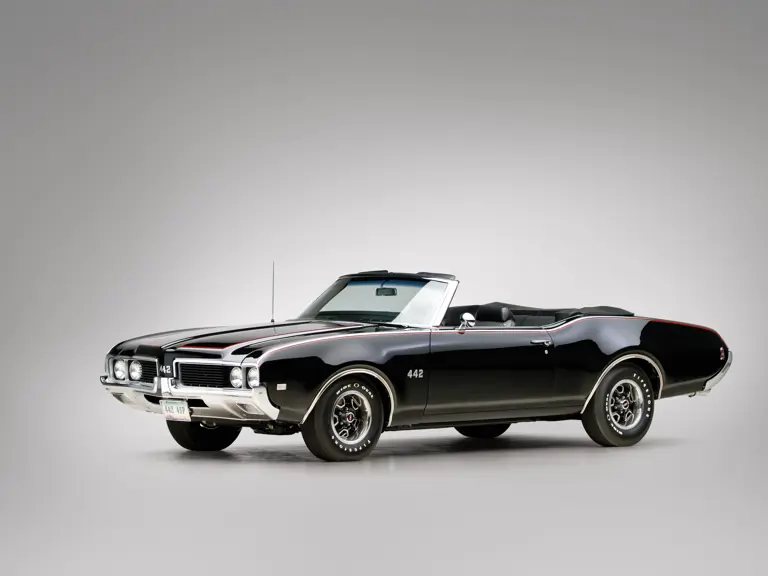
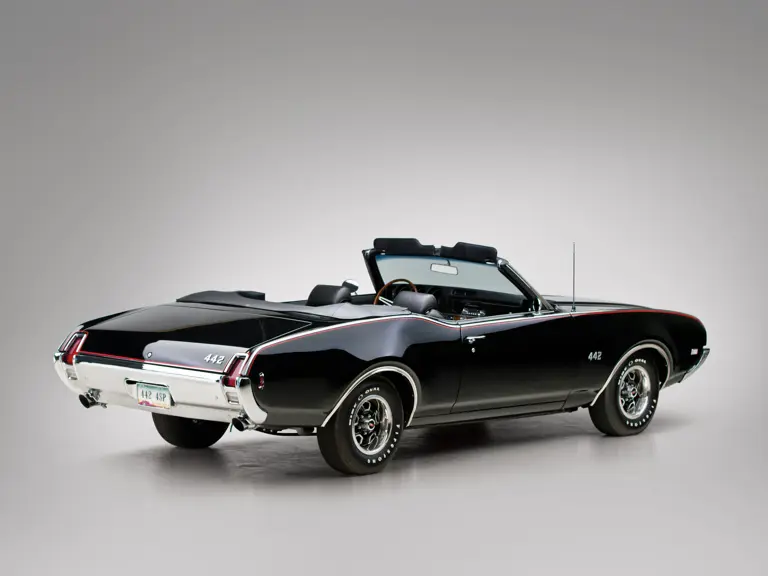
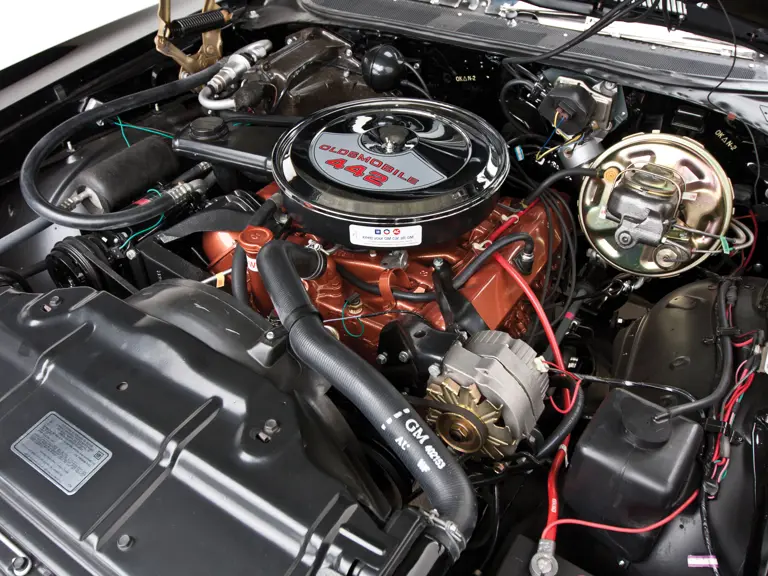
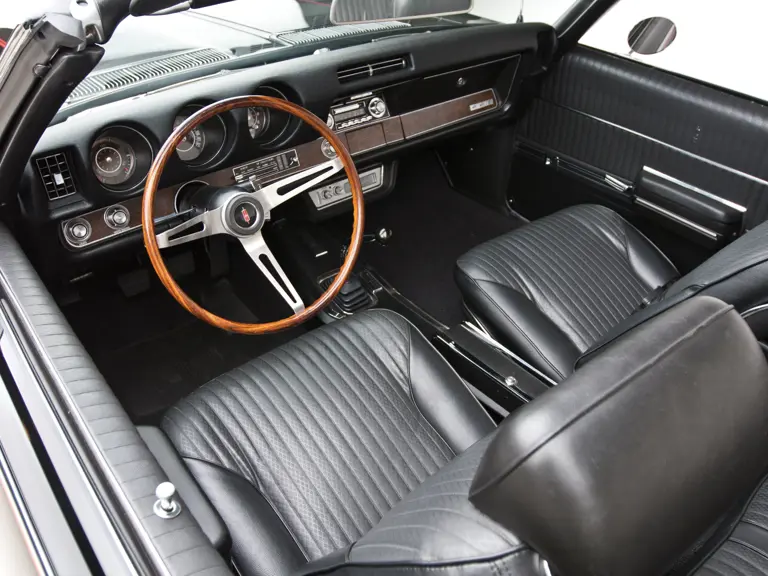
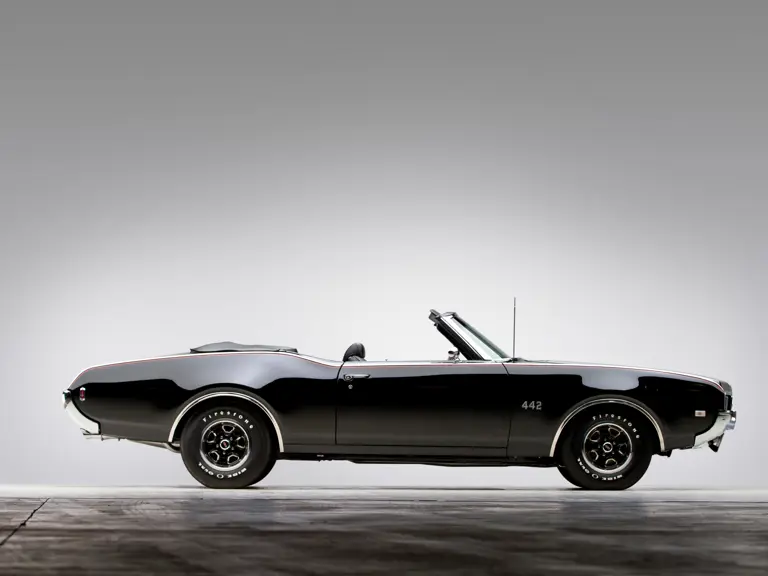

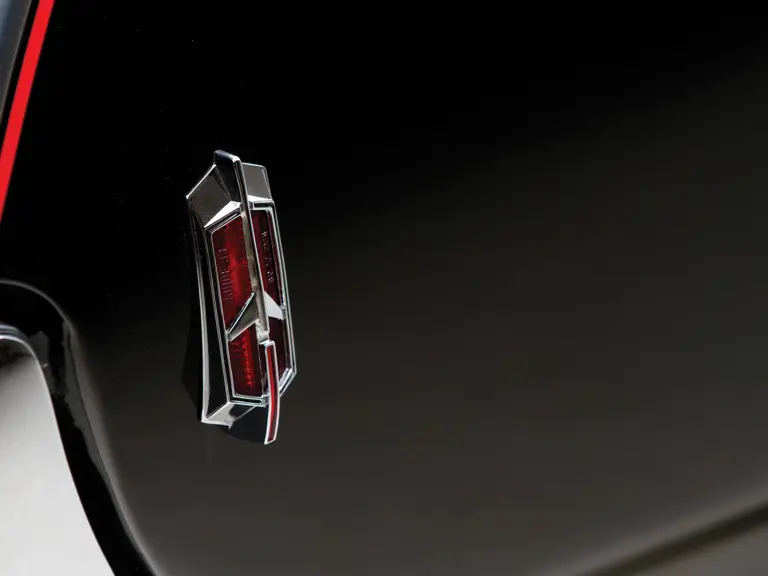
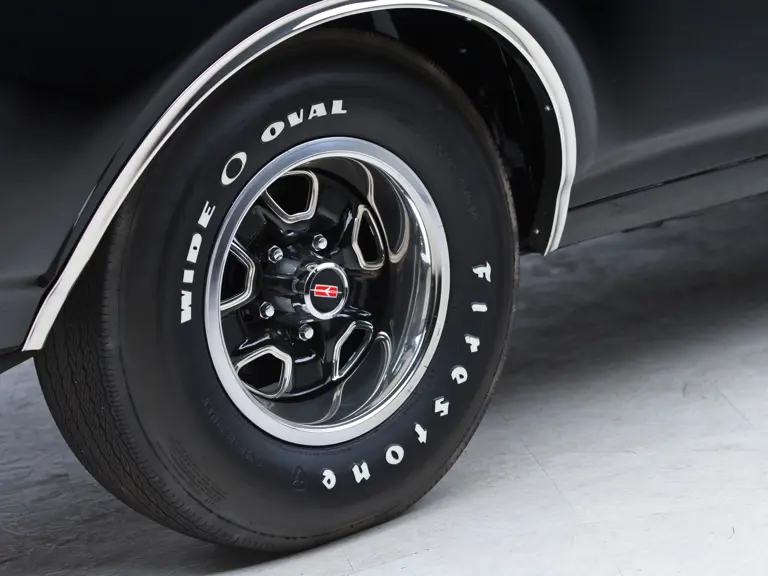
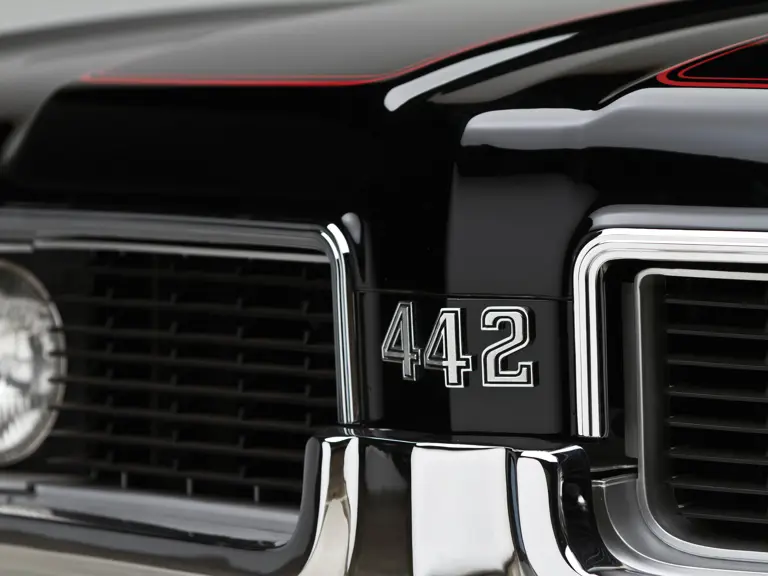
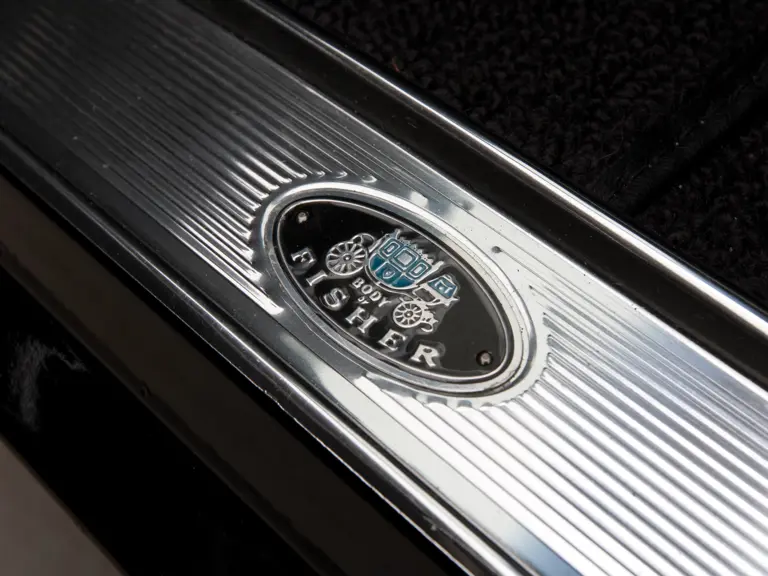
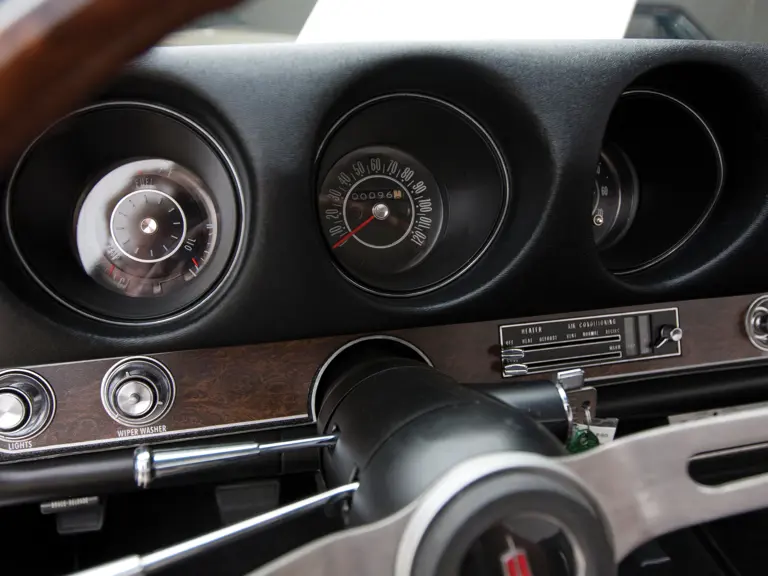
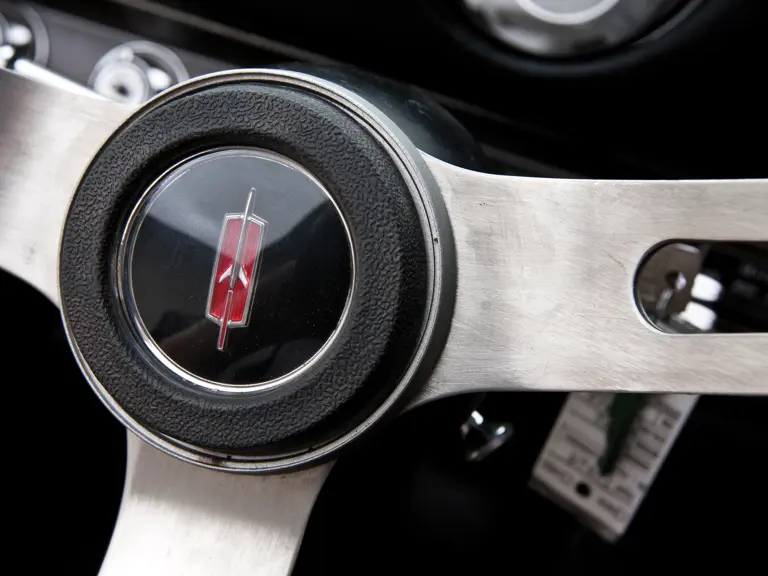
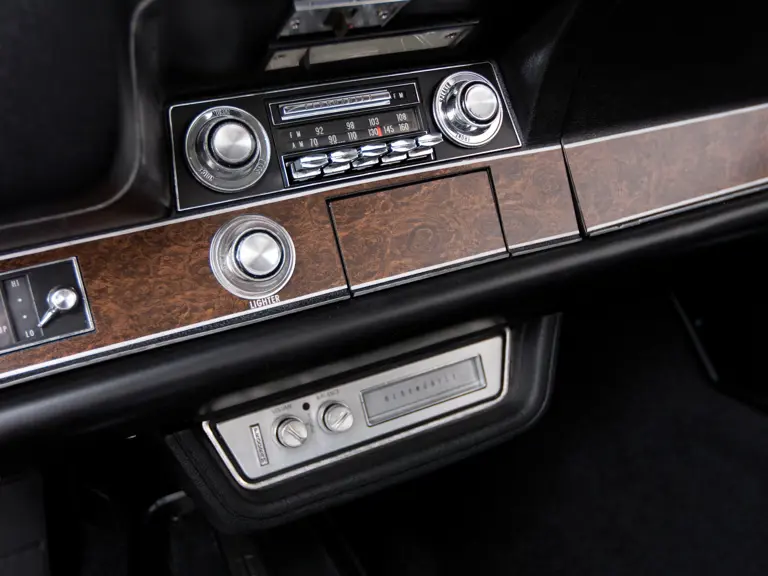
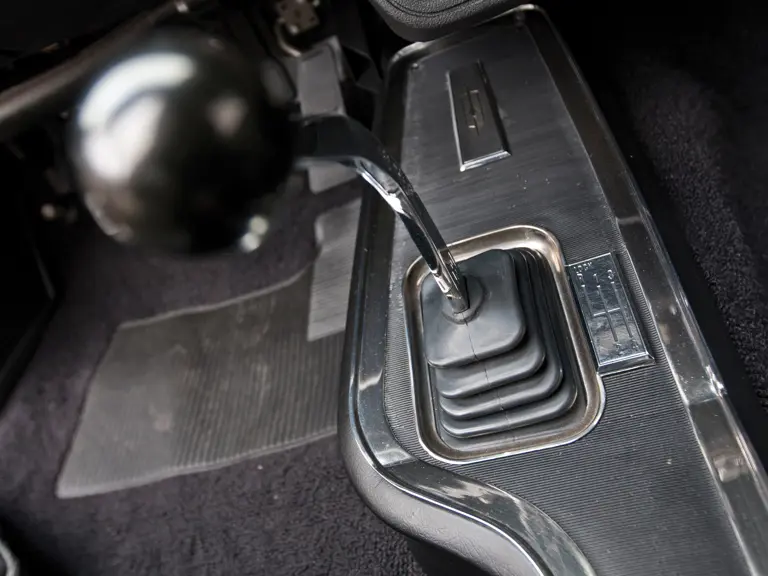
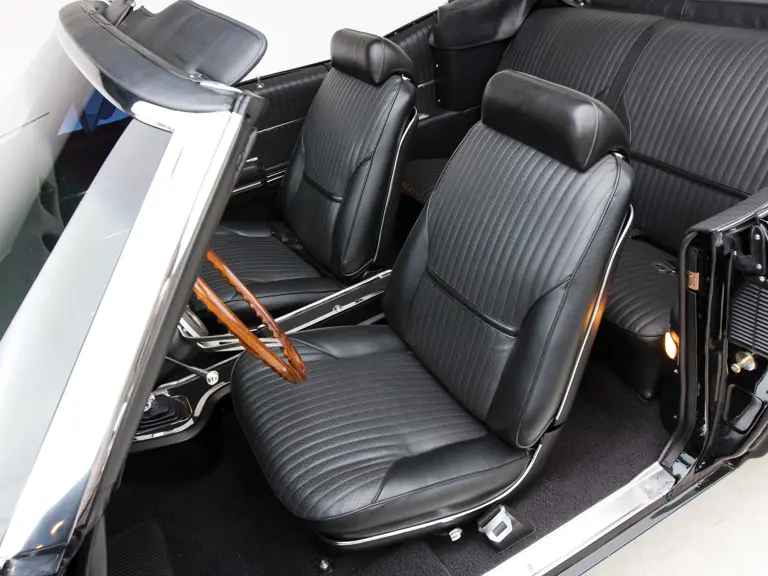
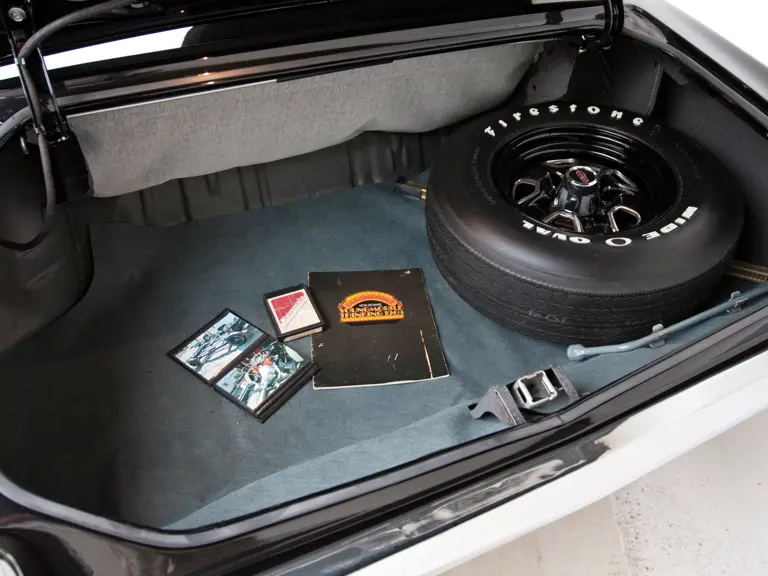

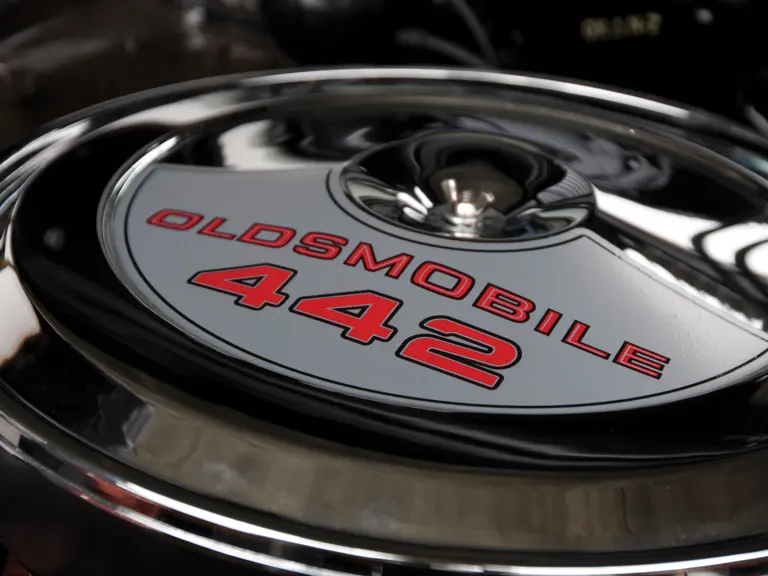
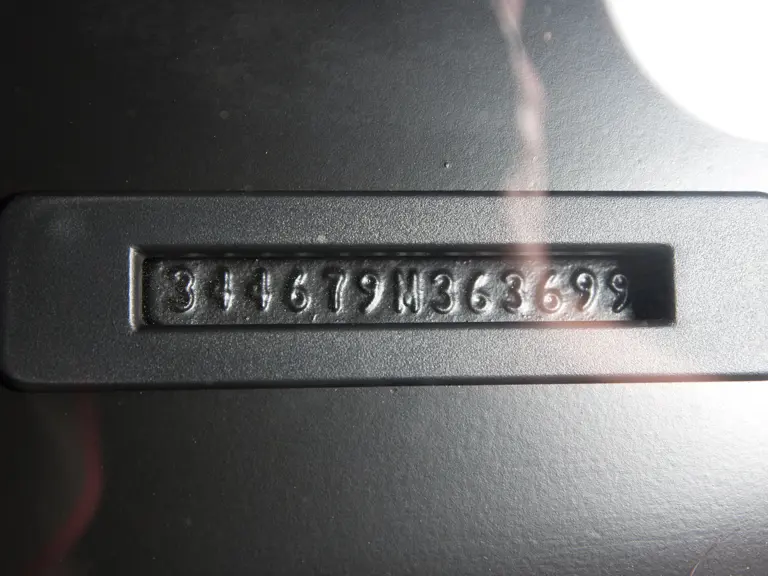
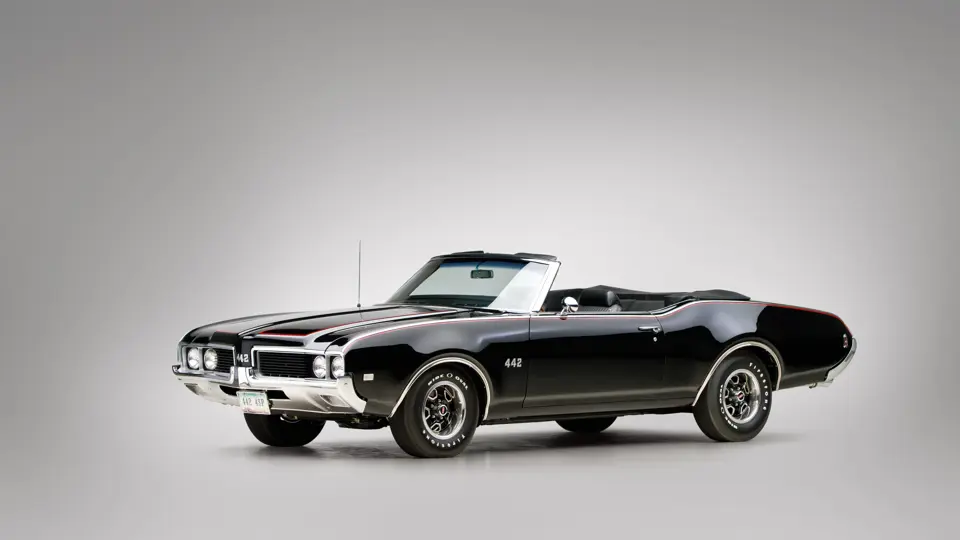
 | North Palm Beach, Florida
| North Palm Beach, Florida

